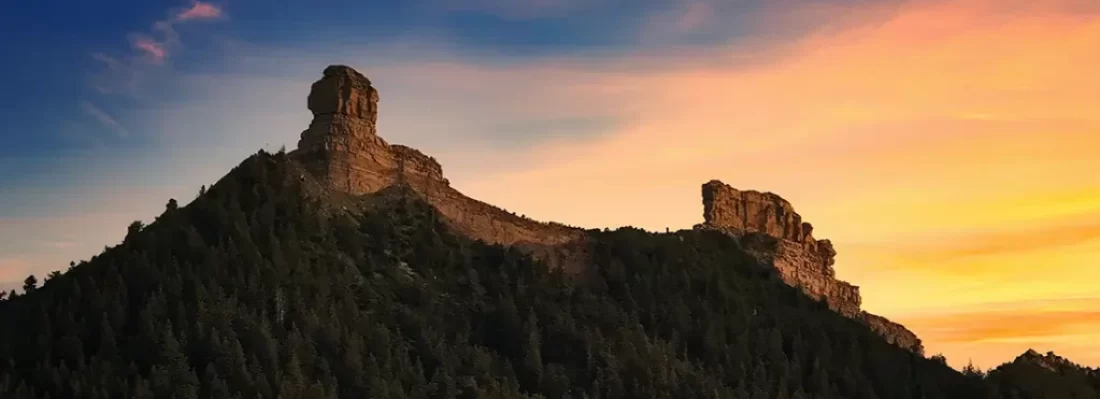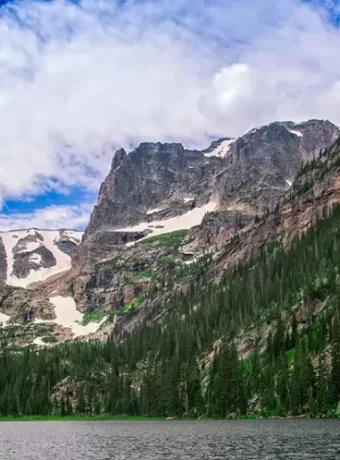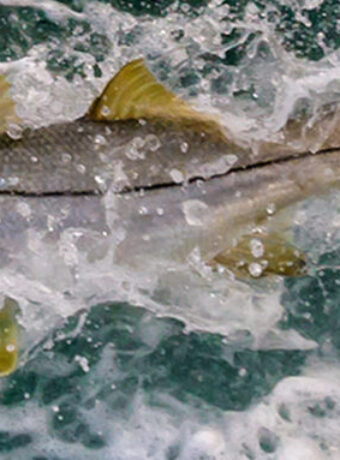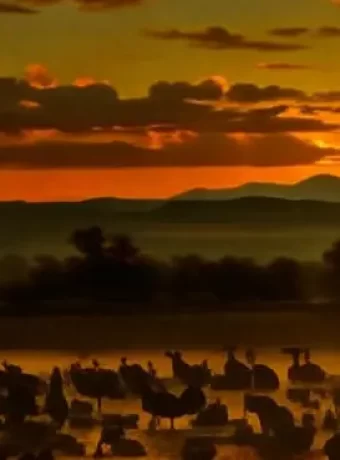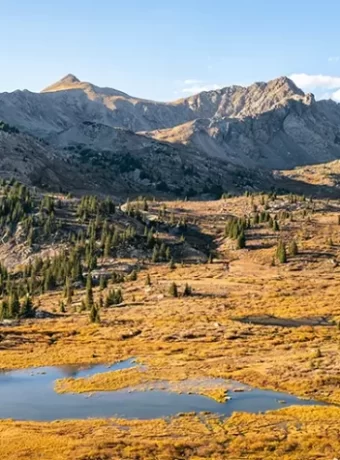Unveiling Chimney Rock: Ancient Wonders Near Pagosa Springs
History of Chimney Rock National Monument and including Pagosa Springs Colorado is a fascinating journey through time, culture, and natural wonder. This archaeological treasure, nestled in the San Juan Mountains of southwestern Colorado, offers a glimpse into the lives of the Ancestral Puebloans who called this place home over a thousand years ago. As we explore the rich history of Chimney Rock’s past and its connection to the vibrant town of Pagosa Springs, we’ll uncover the spiritual significance, astronomical marvels, and enduring legacy that make this site a must-visit destination for history buffs and nature lovers alike.
Designated as a national monument in 2012, Chimney Rock stands as a testament to the ingenuity and celestial knowledge of its ancient inhabitants. The site’s history is deeply intertwined with the broader Chacoan culture, which flourished in the Four Corners region between A.D. 900 and 1150. The History of Chimney Rock National Monument and including Pagosa Springs Colorado reveals a complex society that built impressive structures and developed sophisticated astronomical observations, all while adapting to the challenging high-desert environment. Visitors today can explore the archaeological sites and learn about the daily life of the Ancestral Puebloans.
Table of Contents
The Ancient Puebloan Legacy at Chimney Rock
The story of Chimney Rock begins with the Ancestral Puebloans, who settled in this area more than a millennium ago. These skilled builders and astronomers chose this site for its strategic location and the site located’s unique geological features. The twin spires of Chimney Rock and Companion Rock, which give the monument its name, were more than just striking landmarks—they were integral to the community’s celestial observations and spiritual practices.
Architectural Marvels of the Ancients
Between A.D. 925 and 1125, the Ancestral Puebloans constructed over 200 homes and ceremonial buildings at Chimney Rock. The centerpiece of their settlement was the Great House Pueblo, an impressive structure perched at an elevation of about 7,600 feet. This multi-family dwelling served as both a ceremonial center and an astronomical observatory, showcasing the advanced architectural and engineering skills of its builders.
The Great House Pueblo’s alignment with major lunar standstills—events occurring every 18.6 years when the moon appears framed between the twin spires—demonstrates the Ancestral Puebloans’ deep understanding of celestial cycles. This alignment wasn’t just a coincidence; it was a deliberate and precise feat of ancient engineering and astronomical knowledge. Their understanding of the cosmos allowed them to create structures that resonate with celestial events.
Daily Life and Spiritual Practices
Beyond the grand structures, the site preserves evidence of daily life in this ancient community. Visitors can explore excavated areas that reveal how the Ancestral Puebloans lived, worked, and worshipped. The Great Kiva, a large circular structure used for religious ceremonies and community gatherings, offers insights into the spiritual practices that bound this society together.
According to the Chimney Rock Interpretive Association, the site holds spiritual significance for at least two dozen modern-day Native American tribes. This connection underscores the enduring importance of Chimney Rock in indigenous cultures and highlights the need for respectful exploration and preservation of the site. The site’s spiritual importance extends through generations.
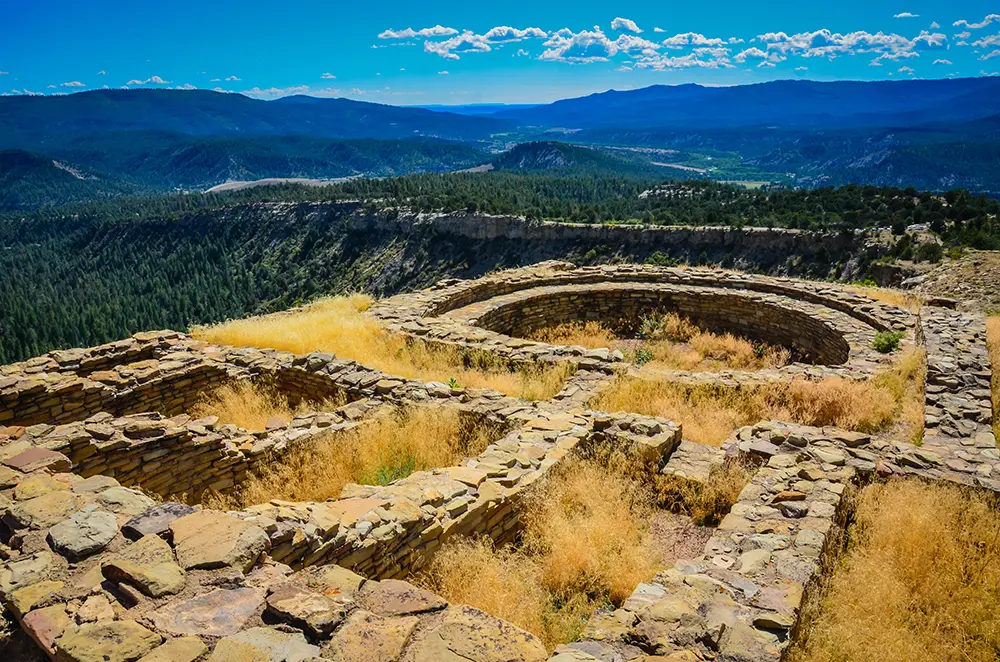
Puebloan Ruins at Chimney Rock National Monument
Graphic Hoodies in a performance outdoor apparel so you have a better experience. Mount Rainier Outdoor Hoodie standing below the milky way hiking and learning about the area. Sun Protective Graphic Hoodie with facemask for added protection. Hiking at above seven thousand feet the is a bit intense.


Graphic Hoodie Grand Canyon
Good outdoor apparel important, the Grand Canyon Graphic Hoodie is a great UPF-50 Sun Protective outer or base layer of hiking apparel.
Astronomical Significance of Chimney Rock
One of the most intriguing aspects of Chimney Rock’s history is its role as a celestial observatory. The Ancestral Puebloans’ understanding of astronomical phenomena was deeply integrated into their way of life, influencing agriculture, spirituality, and social organization. Chimney Rockâs unique positioning made it a perfect place to study the skies.
The Lunar Standstill Phenomenon
The alignment of the Great House Pueblo with the lunar standstill is a testament to the precision of Ancestral Puebloan astronomy. During these rare events, the moon appears to rise between Chimney Rock and Companion Rock when viewed from the Great House Pueblo. This spectacle would have been a powerful spiritual and cultural moment for the ancient inhabitants.
Today, visitors can experience this phenomenon through special programs offered by the Chimney Rock Interpretive Association. The Full Moon Program allows modern-day stargazers to connect with the site’s astronomical heritage, offering a blend of history, culture, and natural wonder. The interpretive association helps connect the modern visitor with ancient astronomical practices.
I have attended two Full Moon Ceremonies, one with an incredible lightning show off to the south. I am looking forward to the third visit.
Seasonal Calendar and Agricultural Practices
The astronomical alignments at Chimney Rock served practical purposes as well. The site functioned as a natural, seasonal calendar that marked equinoxes and other important celestial events. This knowledge would have been crucial for timing agricultural activities and religious ceremonies, demonstrating the sophisticated integration of astronomy into daily life. The Chacoan-style Great House Pueblo played a role in the agriculture of the time.
Preservation and Modern Significance
The History of Chimney Rock National Monument and including Pagosa Springs Colorado is not just about the past—it’s an ongoing story of preservation, research, and cultural connection. The site’s designation as a national monument in 2012 marked a significant step in protecting this archaeological treasure for future generations. Preservation efforts have increased since becoming a national monument.
Archaeological Research and Discoveries
Ongoing archaeological work at Chimney Rock continues to reveal new insights into the lives of its ancient inhabitants. Excavations have uncovered a wealth of artifacts, from pottery and tools to more enigmatic objects that hint at the complexity of Ancestral Puebloan society. These findings help archaeologists piece together a more complete picture of life in this high-desert community over a thousand years ago.
Discoveries made during excavations enrich our understanding of Ancestral Puebloan society. The archaeological research provides more insight into the Chaco culture. Researchers have gained new insights into how they adapted to this area of southwestern Colorado.
Conservation Efforts and Visitor Experience
The USDA Forest Service, in partnership with the Chimney Rock Interpretive Association (CRIA), manages the site with a focus on both preservation and education. Their efforts that the off-the-beaten-path archaeological area can be explored by visitors while minimizing impact on the fragile archaeological remains.
In May 2022, a new visitor center opened its doors, offering exhibits that interpret the cultural and natural history of the monument. This facility enhances the visitor experience, providing context and depth to the exploration of the physical site. The visitor center enhances the exploration of this historic site.
Exploring Chimney Rock Today
For those eager to delve into the History of Chimney Rock National Monument and including Pagosa Springs Colorado, the site offers experiences that bring the past to life. From guided tours to special astronomical events, there’s something for every interest. The monument offers many activities to bring the past to life for visitors.
Guided and Self-Guided Tours
Visitors can choose from a variety of tour options to explore Chimney Rock:
- Guided tours led by knowledgeable volunteers offer insights into the site’s history and significance.
- Self-guided tours along the Great Kiva Trail provide a flexible option for those who prefer to explore at their own pace.
- Special programs, including night sky viewings and full moon tours, offer unique perspectives on the site’s astronomical importance.
To get the best experience, booking tours and programs in advance is recommended, especially during peak season from June to August.
Practical Tips for Visitors
Here are some key things to keep in mind when planning your visit to Chimney Rock:
- The main gate is open seasonally from May 15 to October 15.
- Wear sturdy shoes and bring plenty of water, as the high-desert environment can be challenging.
- Be prepared for rapidly changing weather conditions, typical of the high elevation (7,600 feet above sea level).
- Respect the site’s cultural significance by staying on designated trails and not touching or removing any artifacts.
Pagosa Springs: Gateway to Chimney Rock
An exploration of the History of Chimney Rock National Monument and including Pagosa Springs Colorado is complete with a visit to nearby Pagosa Springs. This charming town, just 17 miles east of the monument, offers a perfect base for your adventure and a wealth of attractions. Pagosa Springs offers area attractions to those visiting the monument. And so much more. My partner and I spent over six weeks here exploring and hiking the Weminuche Wilderness Area.
Natural Wonders and Outdoor Adventures
Pagosa Springs is known for its geothermal hot springs, recognized as the world’s deepest. After a day of exploring Chimney Rock, visitors can soak in the mineral-rich waters, believed to have healing properties. The town’s name itself, derived from the Ute word “Pagosa” meaning “healing waters,” speaks to the importance of this natural wonder.
The surrounding San Juan National Forest offer opportunities for outdoor activities. Hiking, mountain biking, fishing, and skiing are available, making Pagosa Springs a year-round destination for adventure seekers. Visitors can immerse themselves in nature after visiting the historic site.
Hiking Piedra River Trail
Ready for an adventure near Pagosa Springs? Then you should check out the Piedra River Trail. It winds through the San Juan National Forest. This scenic trail gives hikers amazing views. You’ll see forests and canyons. The trail is perfect for a day of exploring the outdoors. It shows off the area’s natural beauty. It is great for both beginners and experienced hikers.
The Piedra River Trail isn’t too hard. But you still get a good workout. As you hike, you’ll walk along the Piedra River. The river’s clear water and the sounds of nature make the hike peaceful. The trail is usually not too crowded. This lets you enjoy the quiet of the forest.
Here’s what you need to know to plan your hike:
- Location: The trailhead is a short drive from Pagosa Springs.
- Difficulty: Easy to moderate. This makes it good for most hikers.
- Length: You can hike as far as you want. The trail goes on for several miles. Way is to a backpack trip through with a shuttle one end.
- What to bring: Water, snacks, sunscreen, and sturdy shoes are important.
Fly Fishing the Piedra River is very good and Spring Whitewater can be and interesting experience.
While you’re in the area, think about visiting Chimney Rock National Monument. It is full of history and amazing views. Or, you can relax in the Pagosa Hot Springs. The hot springs are perfect after a day of hiking. The Piedra River Trail offers a great way to experience the San Juan Mountains. You can enjoy the beauty of southwestern Colorado.
Hike to Treasure Falls
Looking for a quick and rewarding adventure near Pagosa Springs, Colorado? Hike to Treasure Falls! It is a super cool spot that’s easy to get to and offers amazing views. The waterfall plunges 105 feet down the mountain. The falls are a sight to see, especially during spring runoff.
The trailhead is a short drive from Pagosa Springs. From town, head east on Highway 160 for about 15 minutes. You’ll see signs for Treasure Falls on your left. There’s a parking area right by the road.
The hike itself is short, making it perfect for all skill levels. The trail is well-maintained. It leads to a viewing platform. The platform lets you get close to the waterfall. Feel the mist on your face! The best time to visit is during the warmer months. That’s when the falls are flowing strong. But, it can be icy in the winter. So, be careful.
According to local legend, a chest of gold is hidden near or behind the falls. This is where the name Treasure Falls came from. No one has found it yet. So, keep an eye out as you explore!
While you’re in the area, consider checking out other attractions. The San Juan National Forest has trails and stunning landscapes. Wolf Creek Pass offers even more scenic drives. Pagosa Springs has hot springs. The hot springs are great for relaxing after your hike. Visiting Chimney Rock National Monument lets you see ancient history. Chimney Rock is about an hour’s drive from Treasure Falls.
Camping and Kayaking on Williams Lake
Looking for outdoor fun near Pagosa Springs? Williams Creek Reservoir is your spot! This scenic lake is perfect for a chill day. You can fish, kayak, or have a picnic. Towering pines frame the lake, making it beautiful. This place gives you a peaceful escape.
Camping at Williams Creek
Want to stay longer? Camp at Williams Creek! The area has several campgrounds. These let you enjoy the San Juan National Forest. You’ll wake up to fresh mountain air. You’ll also see amazing views.
- Williams Creek Campground: This is the main campground. It has sites for tents and RVs. Each site has a picnic table and fire pit.
- আশেপাশে Campgrounds: There are other smaller campgrounds nearby. These give you a more secluded experience.
Kayaking on the Reservoir
Kayaking is a great way to see Williams Creek Reservoir. The calm waters are perfect for paddling. Bring your own kayak. You can also rent one in Pagosa Springs. Glide across the water and soak in the views. Keep an eye out for wildlife along the shore. You might spot deer or eagles.
Remember to pack essentials for your outdoor adventure. Bring water, sunscreen, and insect repellent. Check the weather forecast before you go. High-altitude weather can change fast. Williams Creek Reservoir offers camping and kayaking. It is a perfect way to enjoy the beauty near Pagosa Springs. So, get out there and explore!
Looking for a real backpacking adventure the Weminuche Wilderness is just up the road.

My favorite all around fly rod is a nine foot six weight. An Olive Woolly Bugger has always been my save the day fly pattern for decades. Then nymphs are a great staple fly, take a soft hackle pheasant tail or hare’s ear. Either of them is hard to beat.
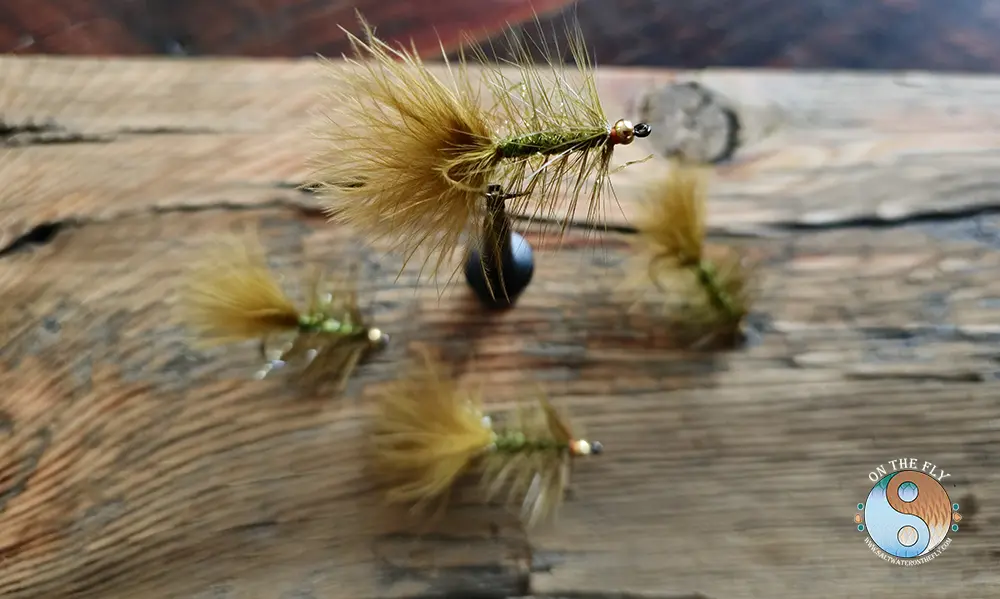
Beadhead Olive Woolly Bugger for fly fishing Williams Lake, San Juan, Williams Creek and the Pagosa River.
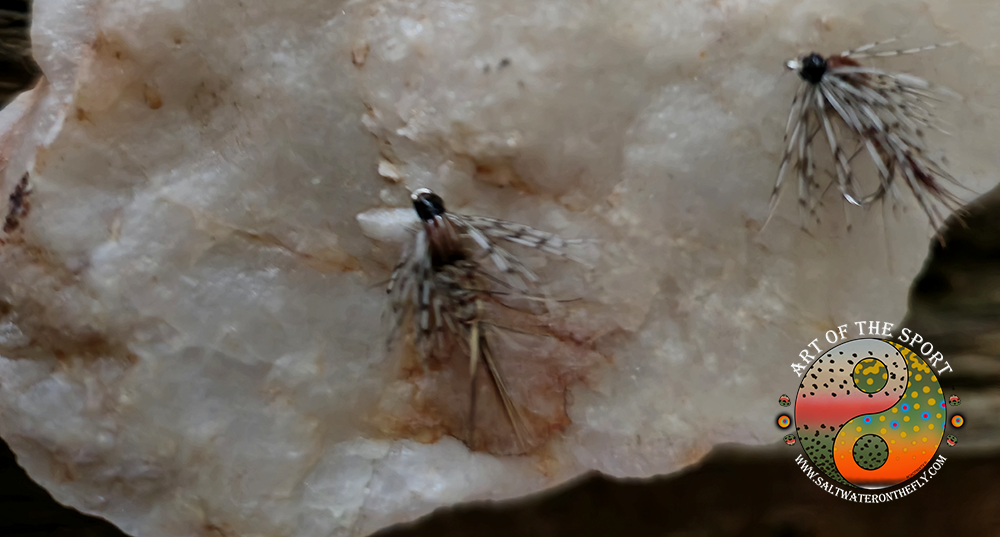
Nymphs
Cultural Attractions and Local Flavors
Pagosa Springs embraces its rich cultural heritage, blending Native American, Spanish, and pioneer influences. Visitors can explore this history at local museums and cultural centers, including the Southern Ute Cultural Center and Museum in nearby Ignacio. These sites reflect the history of the San Juan region.
The town’s dining scene offers a taste of local flavors, from casual eateries to fine dining experiences. Savor craft beers at local breweries or farm-to-table cuisine that showcases the region’s agricultural bounty. The food and drink connect to the cultural roots of the region.
Scenic Drive You Ought to Not Miss Pagosa Junction Loop
The Pagosa Junction Loop Scenic Drive offers a captivating journey through the stunning landscapes of southwestern Colorado, blending natural beauty, historical intrigue, and opportunities for outdoor exploration. This scenic loop, starting and ending in Pagosa Springs, takes you through the Ute Indian Reservation, past historic landmarks, and along the serene West Fork of the San Juan River. Below, I’ll guide you through a detailed description of the drive, highlight key historical spots to stop at, and suggest hiking trails that complement the journey—all wrapped in a conversational tone to help you plan an unforgettable trip.
Description of the Pagosa Junction Loop Scenic Drive
The Pagosa Junction Loop is a roughly 45-50 mile round trip that begins in the charming town of Pagosa Springs. To kick things off, head south from town on Eighth Street, then turn right onto Apache Street, which transitions into Trujillo Road (CR 500). As you roll along, you’ll pass through the early settlements of Juanita and Trujillo—quiet, rural spots that hint at the area’s past. The scenery here starts to open up, with rolling hills and vistas that feel a bit more like New Mexico than the rugged peaks you might expect in Colorado.
The route then takes you south through the Ute Indian Reservation toward Pagosa Junction, a once-bustling hub that’s now a peaceful shadow of its former self. From there, you’ll turn onto CR 700, climbing up Cat Creek Gap. This stretch offers sweeping views of the foothills and mountains, with lush greenery and wildflowers popping in spring and early summer. Keep an eye out for landmarks like the Talian Mine and Lone Tree Catholic Church as you go—they’re worth a quick stop.
Finally, the loop swings left onto CR 500, following the West Fork of the San Juan River back toward Pagosa Springs. This section is a highlight, with the river carving through the valley, often running high after snowmelt. The landscape is vibrant and serene, making it a perfect backdrop for a leisurely drive. The road is mostly accessible to standard vehicles, though some unpaved sections might get bumpy after rain—check conditions beforehand if you’re in a low-clearance car.
This drive isn’t the most dramatic in Colorado, but it’s a solid middle-of-the-road gem—peaceful, scenic, and packed with enough stops to make it worth your time.
Historical Spots to Stop At
The Pagosa Junction Loop is dotted with historical landmarks that bring the region’s past to life. Here are the must-see stops:
- Talian Mine
As you climb Cat Creek Gap on CR 700, you’ll pass the Talian Mine, a now-closed relic of the area’s mining history. This site likely dates back to the late 19th or early 20th century, when miners worked the rugged terrain for minerals or metals. Though you can’t go inside, you might spot remnants of old equipment or structures from the road. It’s a quiet nod to the boom-and-bust cycles that shaped the American West—perfect for a quick photo or a moment to imagine the miners’ tough lives. - Lone Tree Catholic Church
Nearby on CR 700, this small, weathered church stands alone as a historical and cultural treasure. It’s been a fixture for generations, possibly tied to the Ute Indian Reservation or early settlers. Its simple design and isolated setting give it a timeless feel, making it a great spot to pause and reflect on the blending of indigenous and European influences in the area. - Pagosa Junction
When you reach Pagosa Junction itself, you’re stepping into what feels like a ghost town. Once a lively spot—perhaps linked to the railroad or settler activity—it’s now quiet, with just a few structures left. There’s no big museum here, but the stillness and stark landscape let you imagine what life was like over a century ago. It’s a subtle but evocative stop. - Ute Indian Reservation
The drive through the reservation isn’t marked by specific monuments, but it’s a historical experience in itself. The Southern Ute Tribe has called this land home for centuries, and their heritage runs deep. For a deeper dive, consider a side trip to the Southern Ute Cultural Center and Museum in Ignacio (about 50 miles south) after your drive—it’s a fantastic way to learn more about the tribe’s story.
These stops weave together a narrative of mining, faith, and indigenous resilience, all set against the backdrop of the San Juan Mountains.
Hiking Trails Along the Way
While the loop itself doesn’t have trails branching directly off the road, the surrounding San Juan National Forest is a hiker’s paradise. Here are some nearby options you can easily tie into your drive:
- Piedra River Trail
A short detour off the loop via Piedra Road, this 7.3-mile out-and-back trail is a local favorite. It follows the Piedra River through a scenic canyon, with cliffs, water views, and plenty of wildlife—think deer, elk, or birds. It’s moderate, so you’ll get a good workout without too much strain. Perfect for a half-day adventure. - Chimney Rock National Monument Trails
About 11 miles from Pagosa Springs, this spot offers two trails steeped in history. The Great Kiva Trail is a short, paved path (accessible for most) leading to ancient Puebloan sites like a Great Kiva and Pit House. The Great House Pueblo Trail is steeper, taking you to a Chacoan-style ruin atop the mesa with killer views of the twin spires. Both are short but pack a punch—ideal if you love history with your hikes. - Williams Creek Trail
A bit farther afield near Williams Creek Reservoir, this trail heads north into the Weminuche Wilderness. The first two miles are gentle, winding through aspen and conifer groves—great for families or a relaxed hike. Keep going for tougher terrain and epic mountain vistas. It’s a solid pick if you’ve got more time. - Treasure Falls Trail
Roughly 15 miles east of Pagosa Springs on Highway 160, this quick 0.5-mile hike leads to the base of the 105-foot Treasure Falls. It’s easy, family-friendly, and the mist from the falls feels amazing on a warm day. A nice bonus stop if you’re extending your adventure.
These trails let you stretch your legs and dive deeper into the area’s natural and cultural riches—all within reach of the loop.
Tips for Your Trip
- When to Go: Spring and early summer bring wildflowers and lush scenery, while fall offers gorgeous foliage. For hiking, late summer to early fall is prime—cooler temps and fewer bugs.
- Gear Up: Pack water, snacks, and a camera for the drive. For hikes, add sturdy shoes, sunscreen, a hat, and extra water—mountain weather can shift fast, so a light jacket’s smart too.
- Respect the Area: The reservation and forest are sacred and protected. Stick to roads and trails, don’t touch historical sites, and pack out all trash.
- Road Check: Most of the loop is fine for regular cars, but unpaved bits can get rough after rain. A higher-clearance vehicle might be handy if you’re venturing off the main route.
Reason You’ll Love It
The Pagosa Junction Loop Scenic Drive is a hidden gem that mixes jaw-dropping scenery with layers of history and outdoor fun. From the eerie quiet of the Talian Mine to the serene Lone Tree Catholic Church, and from riverside views to nearby trails like Chimney Rock, it’s a chance to slow down and soak in what makes this corner of Colorado special. If you’ve got an afternoon to spare in Pagosa Springs, hit this loop—you’ll come back with stories, photos, and a new appreciation for the San Juan Mountains. Enjoy the ride!
FAQs about History of Chimney Rock National Monument and including Pagosa Springs Colorado
What is the history of Chimney Rock Colorado?
Chimney Rock was inhabited by Ancestral Puebloans between A.D. 925 and 1125. They built over 200 homes and ceremonial structures, including the Great House Pueblo. The site was a center for astronomical observations and spiritual practices, known for its alignment with lunar standstills. Designated a national monument in 2012, it protects its archaeological and cultural significance.
What is the history of Chimney Rock?
Chimney Rock has a rich history dating back over a millennium. It was a significant settlement for the Ancestral Puebloans, part of the broader Chacoan culture. The site’s geological features, including the twin spires, were integral to the community’s celestial observations. Today, it stands as a testament to the advanced knowledge and engineering skills of its ancient inhabitants.
Why is the Chimney Rock important?
Chimney Rock is important because it provides insights into Ancestral Puebloan culture and astronomy. It preserves significant archaeological remains, and holds spiritual significance for many modern Native American tribes. Its alignment with lunar standstills demonstrates the advanced astronomical knowledge of ancient peoples, making it a unique cultural and scientific heritage site.
Was Chimney Rock a volcano?
No, Chimney Rock was not a volcano. The rock formations at Chimney Rock, including the twin spires, are the result of erosion and geological processes over millions of years. They are composed of sedimentary rocks, primarily sandstone and shale, that were deposited in ancient seas and later uplifted and eroded into their current dramatic shapes.
Conclusion of Chimney Rock National Monument
The History of Chimney Rock National Monument and including Pagosa Springs Colorado offers a journey through time, blending ancient wisdom with modern adventure. From the astronomical marvels of the Ancestral Puebloans to the healing waters of Pagosa Springs, this corner of southwestern Colorado invites visitors to explore and connect with a rich cultural heritage.
Standing in the shadow of Chimney Rock’s twin spires reminds us of the human quest to understand our place in the cosmos. The legacy of the Ancestral Puebloans lives on in the stone structures they left behind and the efforts to preserve and interpret this site. Whether you’re drawn by the archaeological wonders, the celestial alignments, or the scenery, Chimney Rock and Pagosa Springs offer an experience that bridges past and present.
Exploring the History of Chimney Rock National Monument and including Pagosa Springs Colorado provides knowledge of an ancient culture and a deeper appreciation for the interconnectedness of human societies with the natural world. It’s a reminder of our shared heritage and the importance of preserving these cultural treasures for future generations to discover and cherish. The major lunar standstill alignment that the Ancestral Puebloans used continues to draw people to the site.
